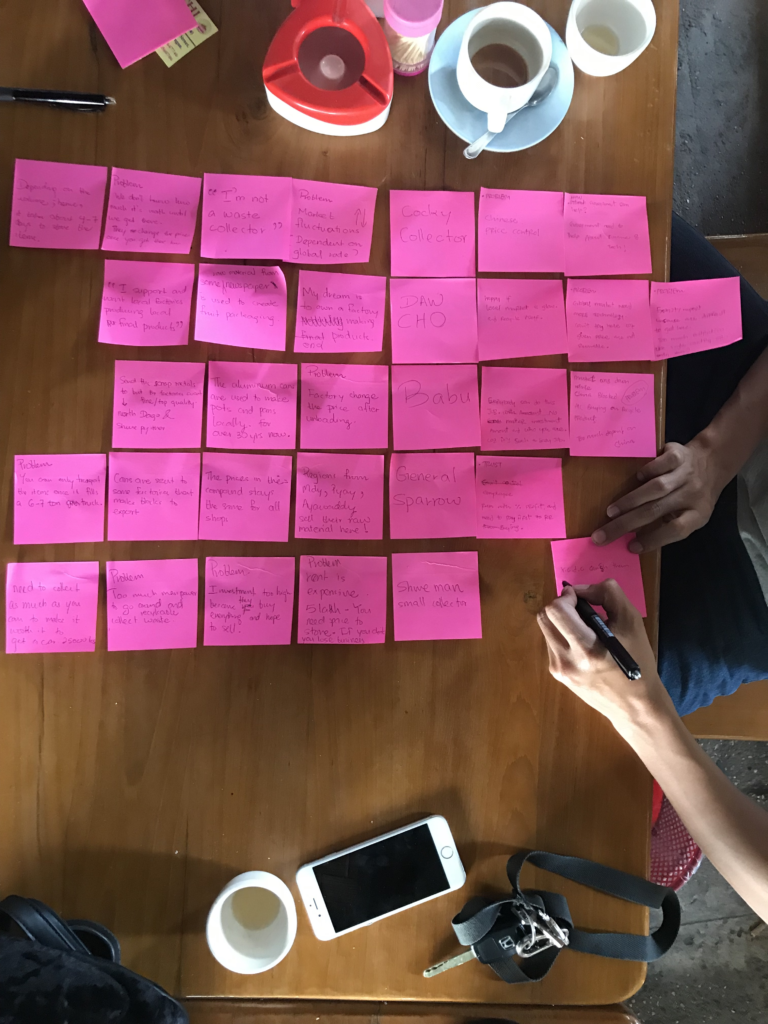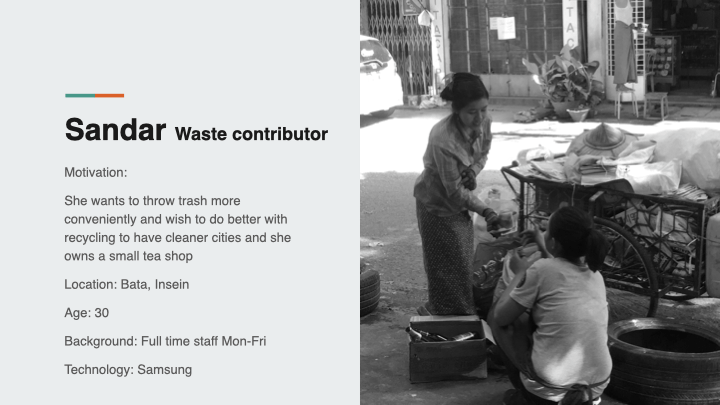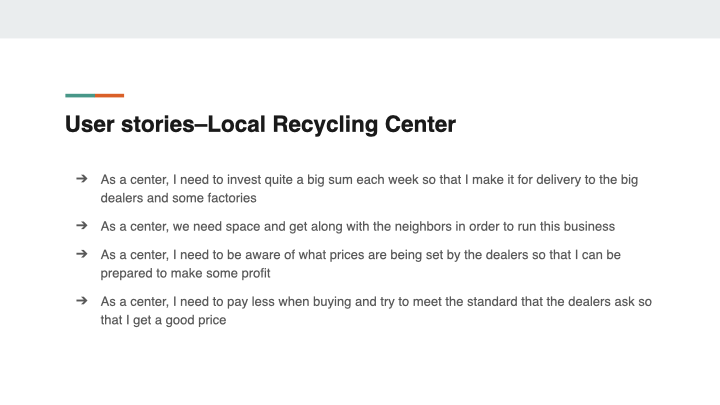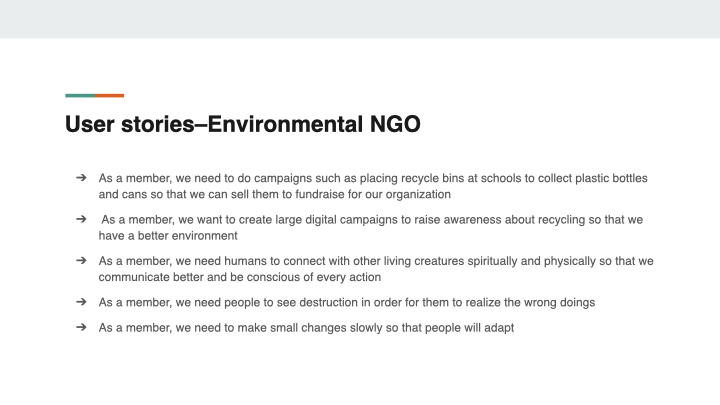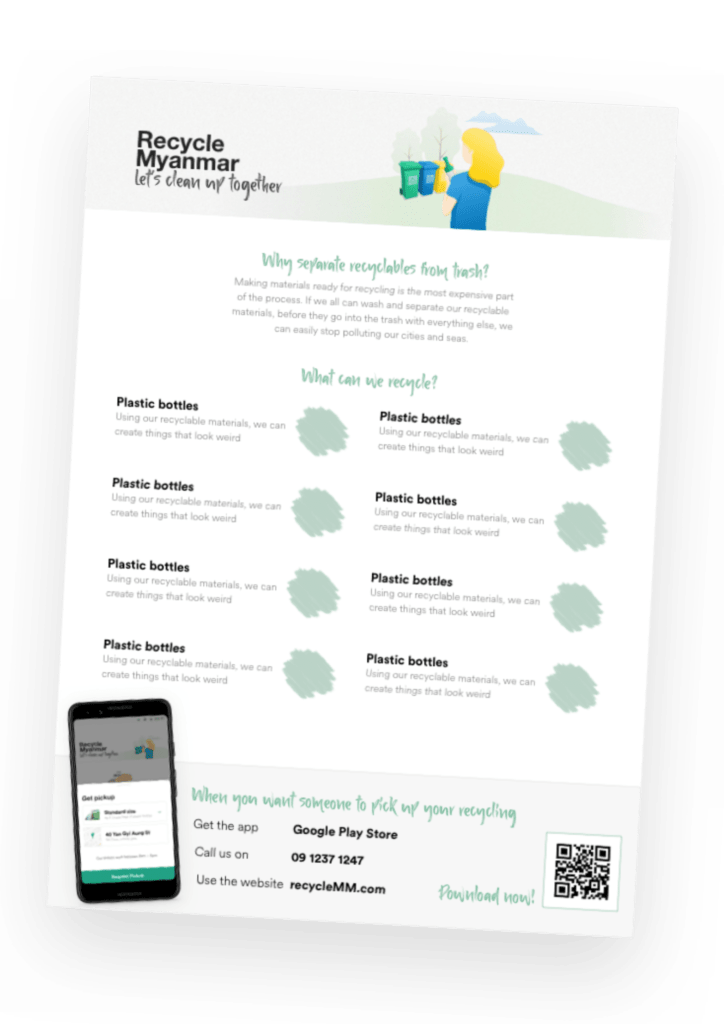Problem Statement
Neighborhood waste collectors are currently filling in the need for households to regularly dispose their waste with ease and the recyclable items are purchased by small recycling shops.
Lack of awareness in 3Rs is affecting the current practices of managing waste and recycling in Myanmar. People neglecting to properly handle recyclable items at the time of disposal adds costs, time and resources in the recycling chain.
Recycling requires behavioral change within self and as a community. Social practices such as separating waste and considering the environment have been neglected in Myanmar which directly affect the recycling chain
HUMAN PROBLEM
Lacking in government’s adequate support and control for managing waste and recycling for the country. The municipal department can not provide efficient service to assist people in disposing their waste and doesn’t illustrate the harmful results of irresponsible waste management. Furthermore, lack of technology and infrastructure creates layers of processing in the recycling chain from collecting materials into producing recycled products.
INSTITUTIONAL PROBLEM

